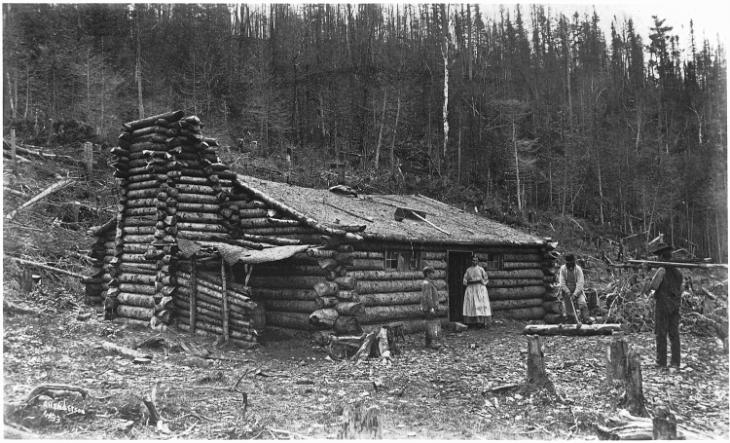A Primitive Hut – Log Shanty on the Tartigou River

Photograph
Log shanty, Tartigou River near Metis, 1871-72
Alexander Henderson
McCord Stewart Museum
What did the houses of the first settlers look like? We can imagine that they were fairly rudimentary and fashioned in a hurry from available timber to provide shelter and warmth to protect the colonists during their first winter in Metis. They would have been improved or re-built as the farmers became more prosperous.
The same method of building in a hurry was repeated during the construction of the Intercolonial Railway in 1871 when hundreds of workers required a roof over their heads. Many lived in shanties along the line. Others built themselves slightly more comfortable accommodations, like this rustic log cabin near the Tartigou River.
The Presbyterian minister Thomas Fenwick sometimes travelled to the work camps to lead the men in prayer and religious service. He also went to root out public disorder, notably the dancing and drink that came with the construction crews. Wages were meagre, just $1 a day for the hard work of moving ballast by wheelbarrow, but the workers had few venues to spend their money. Two unlicensed hotels provided alcohol to the men hungry for entertainment.
Photographer Alexander Henderson captured life on the line when he was commissioned by the Intercolonial to document the progress of the railway’s construction. His images of the log shanties and soiled labourers offer a contrast to the images of fancy shoreline homes and summer finery that became the common currency of postcards and promotional literature in the following decades.

